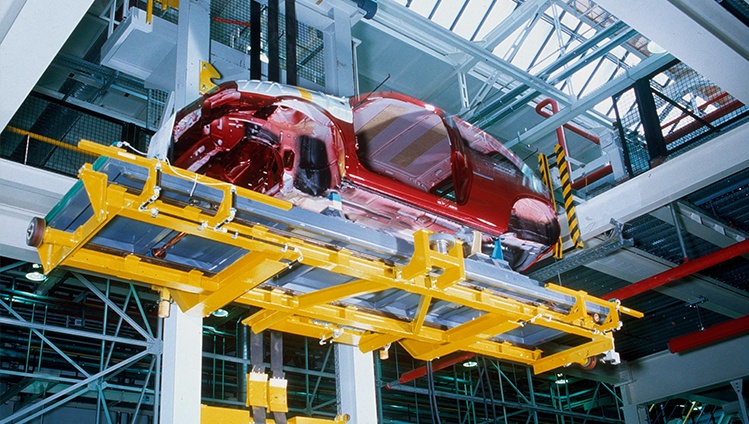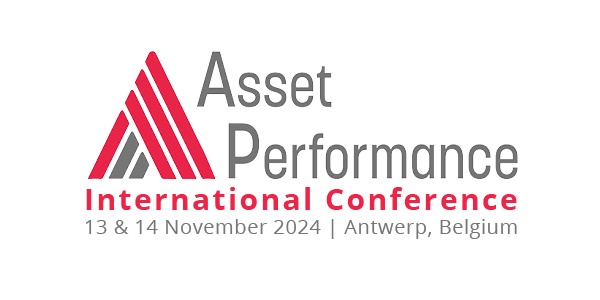Driving the future of automotive manufacturing
Recent developments in technology have created opportunities for all kinds of plants, with disruptive technologies enabling manufacturers to achieve long-desired outcomes faster and at an unprecedented scale. With Industry 4.0, a new level of maintenance is now within reach.

Reactive maintenance is never an option for critical assets, as individual failures can have a direct impact on the rest of the production. There is only one solution to avoid catastrophes: a sophisticated and well-balanced preventive maintenance approach. Dr. Simon Kampa, co-founder and CEO of Senseye: “By following the pre-planned maintenance schedule set for each machine, you can guarantee a certain level of service. However, this procedure means that maintenance engineers will waste valuable time inspecting a lot of equipment with no signs of problems. Pre-planned schedules result in a great deal of over-maintenance and cannot prevent costly unplanned downtime. Assets can fail at any time, even those inspected recently. The reason is simple: there might be a discrepancy between the real machine use and the manufacturer recommendations. Furthermore, unnecessary maintenance causes additional work and extra stress to the engineering teams. As a result, some automotive manufacturers choose to delay ‘non-essential’ maintenance. This approach creates more risk as problems grow proportionately.”
An interconnected reality
A 2019 report from the UK’s Society of Motor Manufacturers & Traders, highlights the interconnectivity of automotive production processes. More than 1,000 trucks deliver £35m worth of components and parts to UK manufacturers daily on a Just-In-Time basis. Inside the factory itself, a complicated network of production lines and machines is required to produce vehicles. “There is high pressure to avoid failures because of the way that manufacturing processes are built,” explains Dr. Kampa. “Every asset is critical because each minute of delay that causes a factory shutdown costs the industry £50,000.”
Real-time failure detecting
The good news is that there are now solutions to prevent downtime. Dr. Kampa explains: “It is possible to capture machine signal failures in real-time from any asset type using specialised software, providing alerts and directing the attention of maintenance engineers to where it is needed most.” Senseye has developed a solution to make this happen. The software analyses a consistent data stream of condition indicators – such as torque, vibration and temperature – and forecasts when intervention is needed. “It connects to any existing data sources already in place, leveraging technology already deployed on the shop floor”, adds Dr. Kampa. “By investing in this kind of specialised maintenance technology, manufacturers can steady the ship and ensure their current factory is as efficient as possible. We provide the security manufacturers need to focus on the most pressing issues and ensure they are sustainable when the new CO2 regulations come into effect.”

Helpful in reducing emissions
The specialised software can be a significant help in avoiding the high fines for exceeding the CO2-targets. Recent legislation means carmakers have to pay €95 (£83) for every gram that exceeds the limit, multiplied by the number of cars sold that year. “To achieve carbon neutrality, you not only have to make sustainable cars, but also cars with a sustainable life cycle,” says Dr. Kampa. “The manufacturing process is the first step to attain in this matter.”
A study on the lifetime carbon footprint of cars found component manufacturing and assembly accounts for around 12% of total carbon produced. A lot of unnecessary energy costs comes from machines not running at their peak performance. The same data that goes into predicting machine failure can identify areas for improvement. “Knowing which assets aren’t working efficiently allows companies to take actions to optimise the performance of their machinery,” adds Dr. Kampa. “And of course, ensuring machines run optimally can deliver low single digital percentage savings in energy use.”
And there are more benefits
The most significant benefit of this new approach to maintenance, however, is the increased machine lifetime. “Extending the lifespan of the equipment in your supply chain, while reducing the amount of spare parts, will lower overall amounts of scrap considerably”, explains Dr. Kampa. “Early detection is critical in this endeavour. The sooner a problem is identified, the easier it can be fixed. Early intervention limits the amount of secondary damage that one faulty part can cause to other components in the same asset. There is also a higher chance that misaligned components can be realigned rather than replaced after a more extended period of extra wear and tear. This reduces levels of scrap and the need for replacements. Be mindful that two machines will never behave or deteriorate uniformly. Different assets have different quirks and characteristics, even two similar models that are produced by the same manufacturer. It all depends on factors that are very hard to predict. So creating a tailored approach for individual assets becomes a must. Some machines will need attending before the next scheduled maintenance visit. By adhering to pre-defined schedules, you let assets with undiagnosed problems run inefficiently and give these problems space to develop. This is where specialised technology has an edge. It allows maintenance teams to go where they are needed, the moment it is necessary. As well as that, not every production asset will require maintenance as frequently as suggested. Over-eager planned maintenance still creates waste. Sending maintenance crews to check on a correctly functioning machine wastes expensive engineering effort, creates downtime, and could result in valuable components being replaced well before necessary.”
Senseye will be talking at Asset Performance 4.0.
